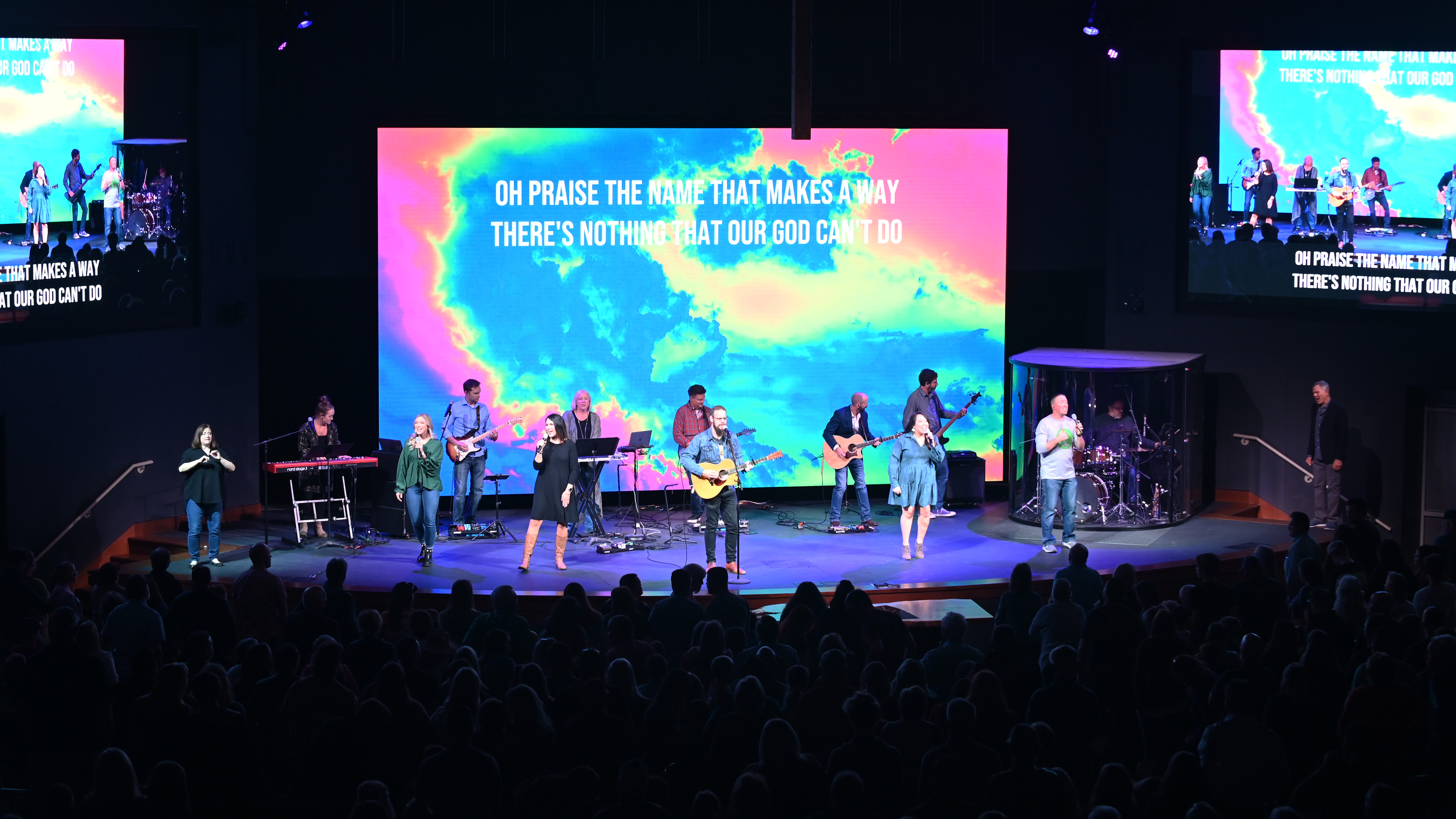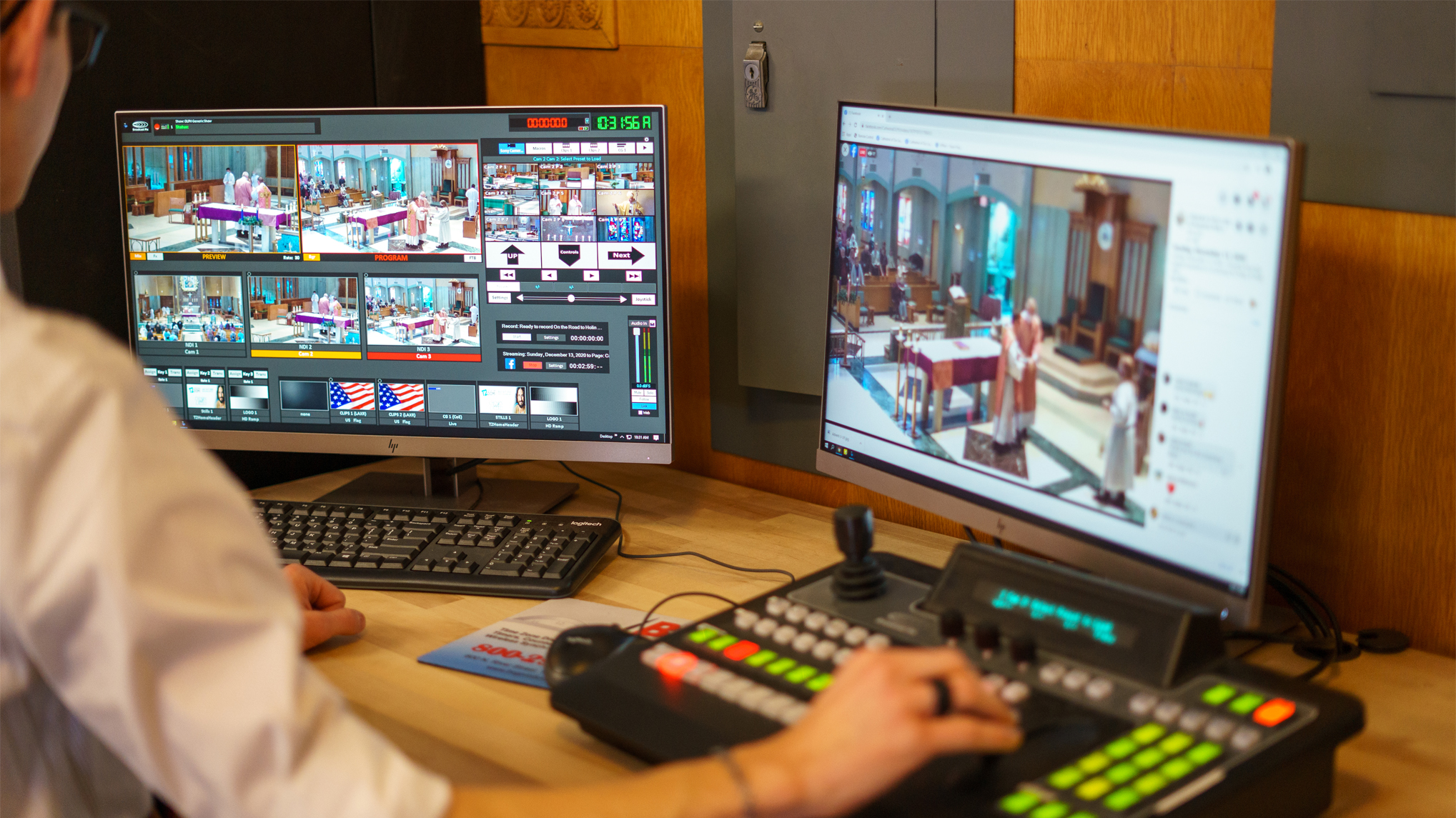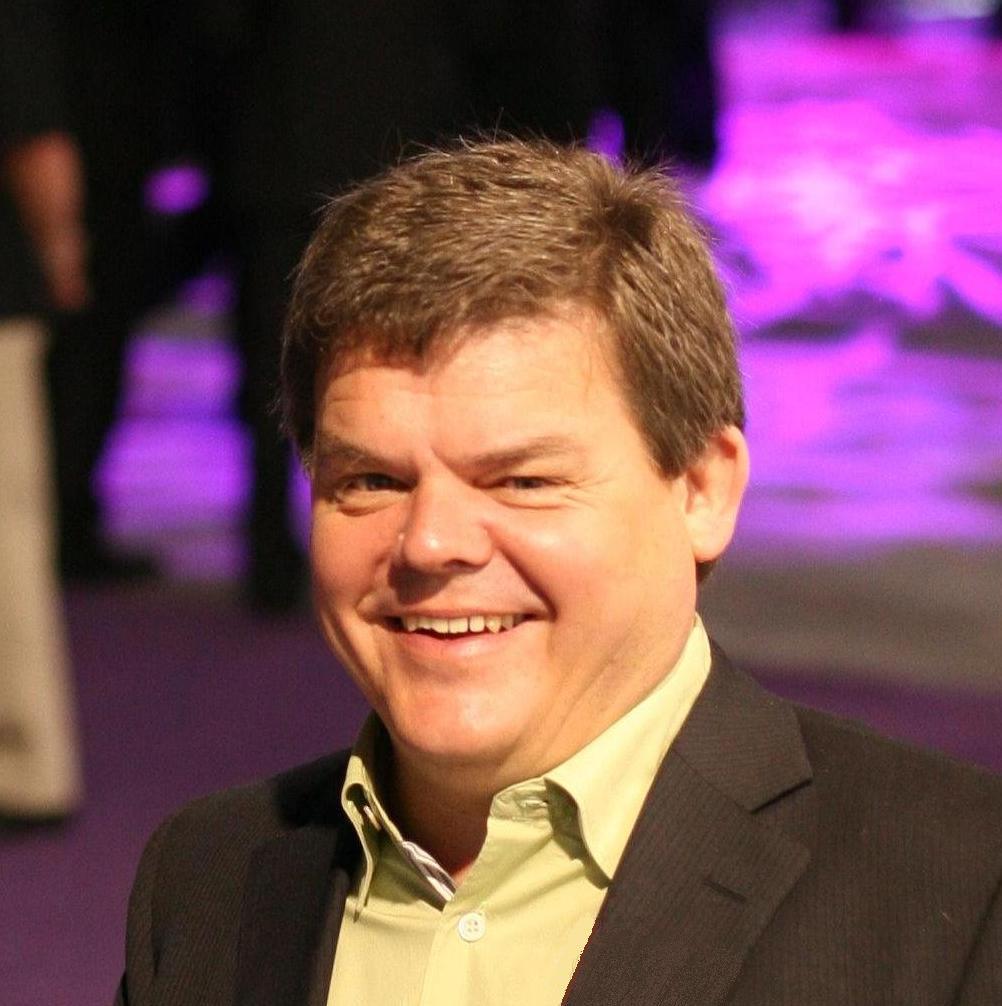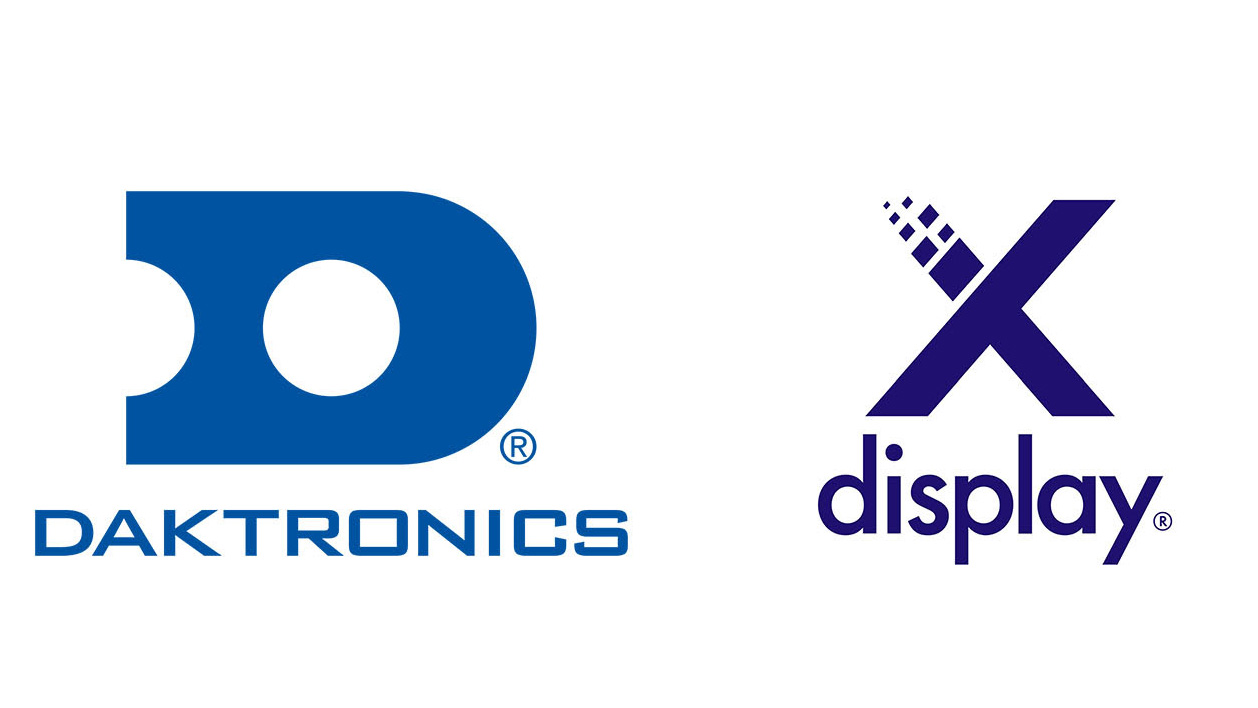Streaming Services: Houses of Worship and the Online Experience
The pandemic drove churches to prioritize their digital presence.

Prior to the pandemic, many houses of worship did not consider live streaming a priority. Whether or not it was necessary to incorporate it into a church’s larger ministry strategy depended on a number of variables, including the specific organization’s budget, its access to technical expertise, and its overall approach to outreach.

“Some churches, before COVID, understood that not everyone was comfortable setting foot into a church, and so streaming was a way for people to check the church out outline in a very safe, one-way communication so they could find out: What is this church about? Is this something that I would be interested in being a part of?” explained Luke Jordan, PMP, CTS-I, vice president and co-steward at Electro Acoustics, an AV design and integration firm based in Fort Worth, TX. “I think those churches were way ahead of the game and had already put themselves out there, had captured a lot of online viewers, and had enough people watching online that they could continue to invest in their technology and improve the production value of their live stream.”
Strategies and Spending
Of course, COVID-19 had late adopters—especially during the early months of the pandemic—scrambling to catch up. While many have stepped up to the challenge, some churches continue to lag behind.
How Electro-Voice EVA Systems Can Optimize Acoustics for Houses of Worship
The Electro Acoustics team spends a lot of time helping churches shape their live streaming strategies. Not only does it help them to narrow down the best tech options for their clients’ applications, it also helps houses of worship practice good financial stewardship. For example, if a church is currently logging only three online viewers per week in spite of the pandemic, spending tens of thousands of dollars on a live streaming system is, arguably, not a wise investment.

Jordan emphasized the need to assess specific goals related to outreach. Does church leadership see streaming simply as a convenience, or is live streaming part of a serious effort to attract new worshippers in the community and beyond? “The technology budget is different depending on the answers to those questions,” he said. “And if their strategy isn’t firm, then the hardware and technology solution they use to get there is not going to be any better.”
It’s also necessary to consider the house of worship’s technical resources. Some churches want to stream to multiple platforms, for example, but this can complicate matters for volunteer production crews who may or may not have a high level of technical training. “With Facebook, you can typically push one button and you’re live, [while] YouTube is more like a five-step process,” Jordan said. “We help them understand … this is going to be something that you’re doing multiple times a week, and you’ve got volunteers running it. You might want to find a platform that requires fewer steps to get up and going.’”
A daily selection of features, industry news, and analysis for AV/IT professionals. Sign up below.
[Historic House of Worship AV Upgrade Includes EAW Audio System]
It’s important to think about the range of compression levels the church will need depending on its audience’s bandwidth needs and preferred viewing platforms before making an investment.
Bryce Button, AJA Video Systems
The discussion on using multiple platforms also extends to analytics; the more platforms a church uses, the more diluted the analytics can get. “You want to know how many people are watching, how long they watch for, [and if] they tune out when the sermon starts,” explained Jordan. “If you have to go to five different places to get your metrics for all of that, it’s just going to be harder to really understand the impact that your online presence is having.”
While some churches opt to use a third-party CDN (content delivery network), it’s not mandatory. According to Bryce Button, director of product marketing at AJA Video Systems, a video and broadcast technology developer headquartered in Grass Valley, CA, most solutions offer the ability to easily interface with platforms such as Facebook and YouTube. “There are a plethora of social media sites and platforms that they can use to deliver live and on-demand content to their audiences,” he noted.

For encoding, Button said many churches will be fine with a single encoder and switched output for their live streaming activities; however, more elaborate setups may require a solution that will encode content into multiple formats and deliver it to multiple destinations simultaneously. The best option, of course, depends on the specific church and its streaming audience. “It’s important to think about the range of compression levels the church will need depending on its audience’s bandwidth needs and preferred viewing platforms before making an investment,” Button explained.
Bandwidth Burdens
Bandwidth, unfortunately, continues to be an issue for some churches. While they may try to get away with a single internet line that is feeding the entire facility, churches should have a dedicated internet line for live streaming, Jordan advised. “People need to understand that the hardware is important,” he said, “but the pipeline that they actually push their content out on is just as important—and does not need to lag behind the technology that they’re investing in inside the building.”
Codecs and compression can help to address the bandwidth issue. At the same time, Button acknowledged that some trial-and-error may be required to strike the right balance between image quality and available bandwidth.
“For some houses of worship, H.264 is appropriate, as it remains one of the widely used codecs,” he said. “However, others might prefer HEVC, which has proven highly efficient at image quality preservation, even in low-bandwidth settings.”
Minimizing camera movement can also help when bandwidth is at a premium. “Too much camera movement can strain the encoding process and lead to breakup,” Button noted, “whereas harnessing multiple setups and still camera positions will result in a cleaner stream with [fewer] compression bottlenecks.”
Volunteer-Friendly Solutions
Sometimes, AV integrators can over-engineer live streaming solutions, according to Graham Sharp, CEO at Broadcast Pix, a broadcast and streaming technology developer in Tyngsboro, MA. In churches with limited technical resources, this is problematic because the people operating the systems don’t have the expertise to take full advantage of the technology.

While Broadcast Pix sells high-end streaming solutions, its ChurchPix solution—an out-of-the-box live streaming system specifically for churches—is designed for facilities where ease of use is a top priority. “Most churches are volunteer-run and volunteer-operated, and those that have [overly sophisticated technology] have ended up with a system that they just don’t know how to operate,” Sharp said. “They end up only using five percent of the functionality of the system, and they find it really hard to use.”
Cameras are another important consideration. Jordan said some churches will invest in a high-quality 4K camera but outfit it with a small lens, only to discover that close-up shots are dark and grainy. One workaround is to put less expensive cameras closer to the stage, with higher-end models—equipped with higher quality lenses and better optics—positioned further away. “That allows us to then balance out our different cameras and shots, and make sure that no matter what we’re using, we’ve got a good, clean image,” he said.
Carolyn Heinze is a freelance writer/editor.
How To Create a VOD Library (Without Breaking the Bank)
AJA’s Bryce Button noted that creating a video-on-demand library has gotten easier and less expensive for churches over the last several years. He points to the availability of tools that can stream, encode, and record content simultaneously––such as his company’s AJA HELO solution. “Post-service or event, it then becomes much simpler to upload the file recording to a library,” he said.
Current solutions also support different compression levels for streaming and recording. “[This ensures] that live stream viewers with low bandwidth still receive a great experience via a compressed stream,” Button added, “while a less compressed stream can be recorded for integration into the VOD library.”
Carolyn Heinze has covered everything from AV/IT and business to cowboys and cowgirls ... and the horses they love. She was the Paris contributing editor for the pan-European site Running in Heels, providing news and views on fashion, culture, and the arts for her column, “France in Your Pants.” She has also contributed critiques of foreign cinema and French politics for the politico-literary site, The New Vulgate.
